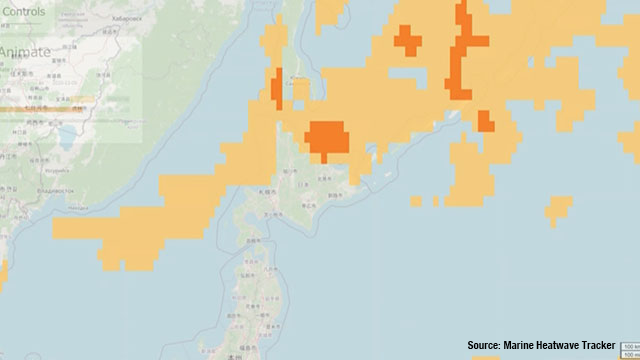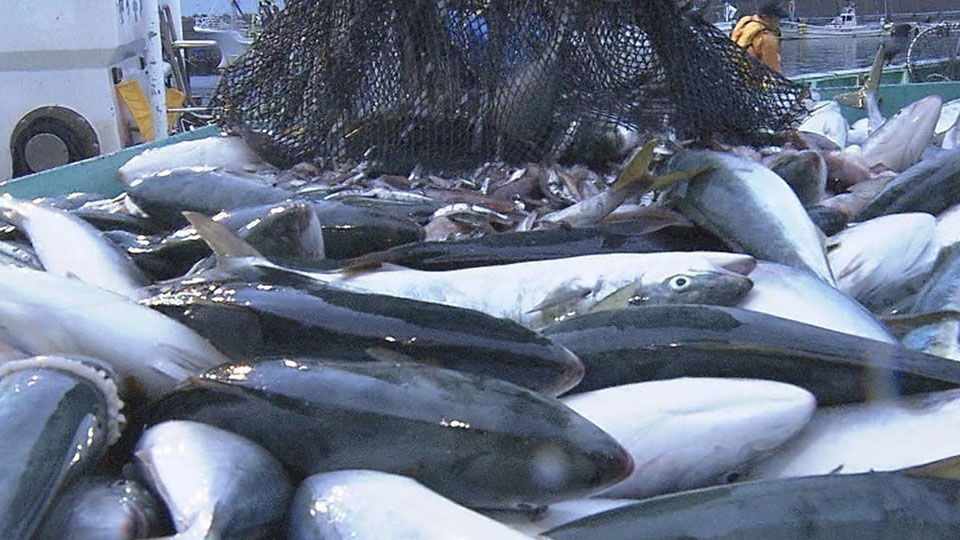In September, when the season’s salmon fishing began in Hokkaido, the Dainana Kyoshinmaru pulled up several two-meter-long sunfish in its fixed nets off the coast of Kushiro.
Typically, sunfish prefer warm waters in tropical and temperate zones and have seldom been caught off Hokkaido. This year, the skipper of the Dainana Kyoshinmaru says he landed so many they would almost have sunk his boat had it been any smaller. Meanwhile, hauls of salmon -- the area’s leading product -- have collapsed to around 10 percent of what they were at their peak.
Abnormal temperatures
Hokkaido University Professor Emeritus Sakurai Yasunori has been studying the movement of fishery resources and the ecosystem in Hokkaido for 50 years. He says one of the major reasons for the continued poor catches in the prefecture is the marine heatwave. That’s a phenomenon in which seawater temperatures remain anomalously higher than usual for more than five days; something that’s being seen increasingly frequently around the world.
Sakurai says the extreme temperatures keep salmon and saury away, while attracting sunfish and yellowtail. “An increase of 3 to 4 degrees Celsius in sea temperatures is equivalent to a rise of 15 to 20 degrees in atmospheric temperatures,” he says. “The occurrence of a hotspot, or a sharp thermal elevation in seawater, dramatically changes the species of fish in the area.”
A heatwave tracker run by an international collective of marine scientists indicates there was a 20-day heatwave off the coast of Kushiro around the time the Dainana Kyoshinmaru was pulling up its unwanted haul of sunfish.

Wasted investment?
Seafood manufacturer Kaneyoshi is based in the Hokkaido city of Nemuro and has been focusing on the production of retort-packed saury. The city lands the largest catch of the fish in Japan, and that convinced the company to invest several million dollars in infrastructure there, including a new saury processing plant. But this year’s hauls have been the lowest ever.
President Hamaya Takao says the processing industry prioritizes consistency of product, so it’s difficult for them to adjust quickly to changes.
Shifting to ‘sellable’ fish
Elsewhere in Hokkaido, the city of Hakodate is home to efforts to develop new distribution channels for yellowtail. Catches have been on the rise, with those unloaded near the city increasing tenfold compared to a decade ago, but fisheries are battling a lack of awareness of the fish.
To address that, an event in October showcased yellowtail recipes at public tasting sessions. “Many people say they don’t know how to eat yellowtail,” says organizer Kokubun Shingo. “For the fish to take hold in local culture, it’s essential to first show people that it’s good and enjoyable.”

Still, though, the marine heatwave looms over the future of the northern fisheries industry. The phenomenon has been recognized only recently and, as the mechanism behind it is not well understood, there’s no guarantee that the current bountiful catches of yellowtail and other fish will continue.
Sakurai says it’s difficult to forecast marine heatwaves, so Hokkaido’s fishermen will have to plan for different scenarios, and learn how to adjust.


